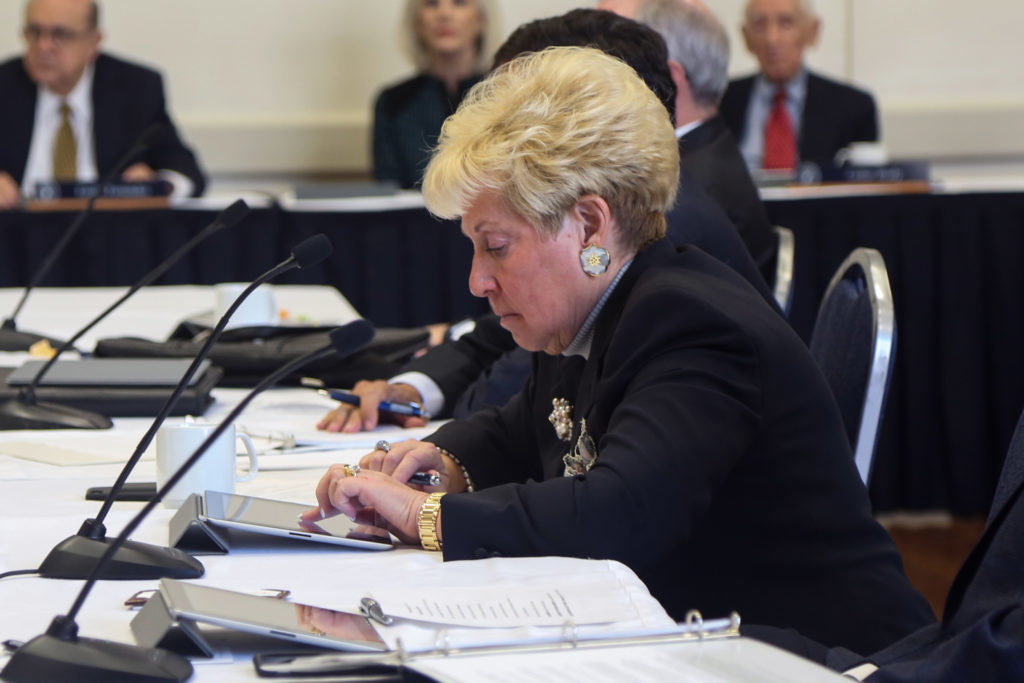The University’s investments had a strong performance last fiscal year, generating a more than $150 million boost to GW’s financial foundation.
GW’s endowment grew by about $159 million in fiscal year 2017, which ended in June. With a current total of $1.73 billion, the endowment saw an increase of more than 10 percent from the previous year. Officials attributed the increase to a favorable return on investment and increased fundraising efforts.
University spokeswoman Maralee Csellar said the performance of GW’s investments in D.C. real estate – roughly $900 million of the total endowment – led to the increase.
“We are pleased that our endowment continues to support students and faculty and provide them with a world-class learning experience,” she said in an email.
Csellar said philanthropic giving was another factor that contributed to endowment growth. The University entered the home stretch of its landmark $1 billion fundraising campaign last fiscal year. The campaign officially wrapped up over the summer, after reaching its goal more than a year ahead of schedule.
Csellar declined to say what strategies the University uses to gain the greatest return on its investments.
The University’s endowment is its financial foundation, made up of various investments in stocks, bonds, real estate and other financial assets. It is used to fund professorships, scholarships, construction projects and other University activities.
Each year, the University decides to pay out a percentage — this year more than $75 million — to include in the operating budget.
In fiscal year 2016, the endowment dipped $50 million down to $1.57 billion, and the University’s ballooning debt surpassed the value of the endowment.
The University raked in about $180 million in returns on different investments last fiscal year, compared to a little more than $13 million the previous year, according to newly released financial documents.
The $1.73 billion endowment is about the same amount as the University’s debt, according to financial statements.
Don Parsons, a professor of economics, said the increase could be a sign of favorable markets, a strong investment strategy or a combination of both. He said the University could have made wise financial decisions or simply been lucky last fiscal year.
“A smart man can lose a lot of money, and a fool can gain a lot of money in the market sometimes,” he said.
The stock market has performed well overall in the last few years, and that could contribute to the increase in endowment from investments, Parsons said.
In fiscal year 2016, endowments experienced a decrease on campuses nationwide as investments sagged, according to a report by the National Association of Colleges and University Officers.
An increase in the endowment demonstrates that the University will be able to invest more in students down the road, Parsons said. GW’s revenue increased by 16 percent from fiscal year 2016, while expenses increased by 2 percent, according to an outside audit of finances.
Joseph Cordes, a professor of economics, said both the increase in the endowment and the increase in revenue make the University look more competitive for creditors, demonstrating it can still pay back substantial debts and add more debt if needed.
Cordes said the University’s budget cuts and other cost-cutting methods appear to be having the desired effect of growing revenue. But there are potentially consequences for service in the long term, he said.
In fiscal year 2016, the number of University employees decreased for the first time in at least six years. In May 2016, former University President Steven Knapp announced the University would cut budgets for central administrative units by 3 to 5 percent budget each year for five years as a cost-saving measure.
“If I were a betting person, there reaches a point where you can’t cut without erosion in key services,” he said.





